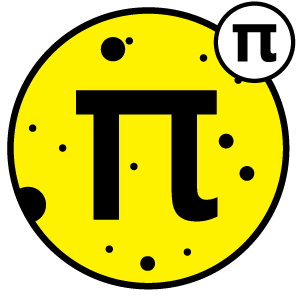Drive, driven. Gave, given.
•
• Give me a number of games.
• more quotes
space + pixels
places to go
nobody to see
nobody to see
π in the sky
·
If you like space, you will love this. The 2017 π Day art imagines the digits of π as a star catalogue with constellations of extinct animals and plants. The work is featured in the article Pi in the Sky at the Scientific American SA Visual blog.
Ultima Thule
very last stop
very last stop
The Solar System (20 July 2019)
Planets, satellites, comets, asteroids. Mysterious space bodies or kinetic collision junk?
From 2005 UR at 0.27 A.U. to Eris at 96.0 A.U., explore 772,063 places and objects in our solar system as they are positioned on 20:18 UTC on 20 July 2019. If you want to see the layout on another date, try the Cosmic Calendar.
None of the scaling is linear—a mix of log and power scaling is used. The region of the asteroid belt at around 2.4 AU and the Kupier belt at around 40 A.U. is expanded.

▲ The solar system map shows planets, satellites, comets and asteroids. All objects except for comets are drawn proportionally to their diameter, albeit in a non-linear funky way. Labels are lovingly placed.
100 megapixel map
48,586 asteroids (34,219 with labels)
1,320 comet
28 satellites
9 planets
3,276 ephemeris markers (3,263 with labels)
-------
53,219 places
10 gigapixel map
757,966 asteroids (717,560 with labels)
1,320 comet
28 satellites
9 planets
12,740 ephemeris markers (12,412 with labels)
-------
772,063 places
Martin Krzywinski | contact | Canada's Michael Smith Genome Sciences Centre ⊂ BC Cancer Research Center ⊂ BC Cancer ⊂ PHSA
{ 10.9.234.151 }
